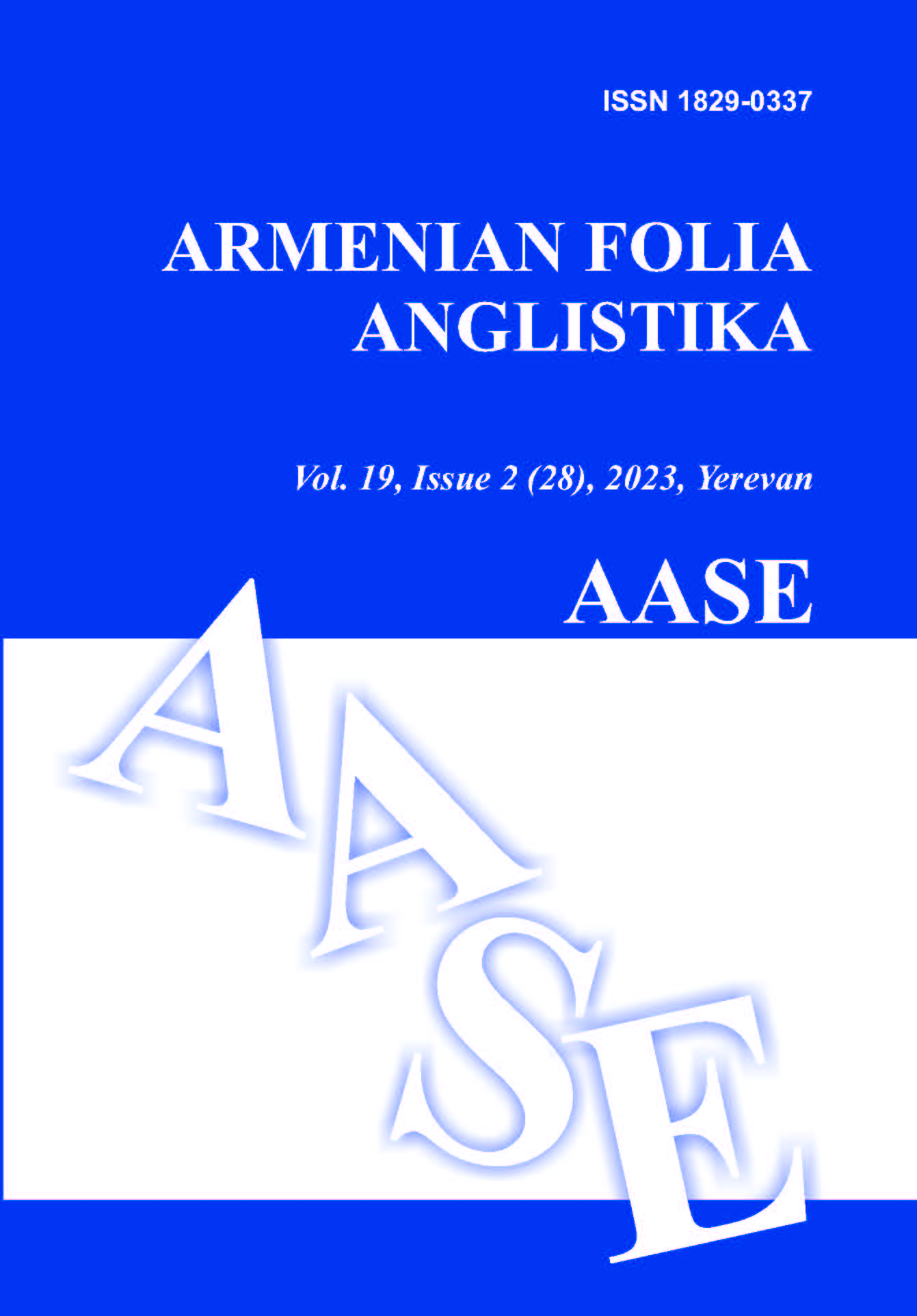THE MEMORY OF THE ARMENIAN GENOCIDE. P. BALAKIAN’S “BLACK DOG OF FATE”
DOI:
https://doi.org/10.46991/AFA/2023.19.2.187Keywords:
the Armenian Genocide, Diaspora fiction, trauma, lost homeland, literature, reconstruction of the lost identity, memoryAbstract
The present article touches upon the mnemonic functions of literature in terms of shaping collective memory. P. Balakian’s novel “Black Dog of Fate” recounts family history of the Armenian Genocide survivors. In the novel the author constructs the narrative of memory via portraying the sufferings and pain of people who firsthand suffered the atrocities committed by Turks. The author with retrospection recollects his experience as a third generation of Genocide survivor. Various recurrent concepts like “old country”, Western Armenian food, the etymology of personal names are constant reminders of unbearable trauma and pain that Diaspora Armenians feel for their lost homeland. Even the title of the novel represents one of the underlying topics of the novel i.e. the fate (pakht) of Armenians is different from everyone else’s as the Genocide has left an indelible trace on each and every survivor of the Armenian Genocide. The novel also dwells on the issue of the identity crisis, since when the country that you come from is lost forever, any Armenian from the Diaspora doesn’t seem to have a sense of belonging. The main characters of the novel are Balakian’s family who suffer the trauma in their own way. Balakian’s narrative is constructed in a way that family history helps the readers understand the history in general. Each survivor’s story is part of a jigsaw puzzle at the end of which the reader envisages all the horrors of the Armenian Genocide.
Downloads
References
Assmann, J. (2008). Assmann, J. (2010). Communicative and cultural memory. In A. Erll & A. Nünning (Ed.), Cultural Memory Studies: An International and Interdisciplinary Handbook (pp. 109-118). Berlin, New York: De Gruyter. https://doi.org/10.1515/9783110207262.2.109
Bablumyan, A. (2022). The consequences of the Armenian genocide in Diarbekir (Tigranakert) province. International Review of Armenian Studies 3(30), 44-57.
Caruth, C. (1995). Trauma. еxplorations in memory. The John Hopkins University Press
Caruth, C. (1996). Unclaimed experience. trauma narrative and history. The John Hopkins University Press.
Giantsidis, C. (2018). Re-evaluating “authenticity” in Holocaust literature – memory and trauma in recent holocaust fiction. University of South Carolina
Lachmann, R. (2010). Mnemonic and intertextual aspects of literature. In A. Erll & A. Nünning (Ed.), Cultural Memory Studies: An International and Interdisciplinary Handbook (pp. 301-310). Berlin, New York: De Gruyter. https://doi.org/10.1515/9783110207262.5.301
Neumann, B. (2010). The literary representation of memory. In A. Erll & A. Nünning (Ed.), Cultural Memory Studies: An International and Interdisciplinary Handbook (pp. 333-344). Berlin, New York: De Gruyter. https://doi.org/10.1515/9783110207262.5.333
Sontag, S. (2003). Regarding the Pain of Others. New York: Picador: Farrar, Straus and Giroux
Suleiman, R. S. (2006). Crises of memory and the second world war. Harvard University Press.
Sources of Data
Balakian, P. (2009). Black Dog of Fate. New York: Basic Books
Downloads
Published
Issue
Section
License
Copyright (c) 2023 Author(s)

This work is licensed under a Creative Commons Attribution-NonCommercial 4.0 International License.














